It’s 7am and 13 young women are seated around a table in the centre of Nsanshi Art’s spacious workshop, sunlight streaming through the wide windows. Clamps and jeweller’s saws and torches lie on workstations around them, waiting for the work day to start, when they will turn scraps of discarded copper into custom-made jewellery and other value-added products.
These women are the latest students in Nsanshi Art’s two-year training programme, during which they will learn a set of entirely new skills, equipping them for careers in jewellery design and manufacturing.
But this is much more than an ordinary training programme.
Nsanshi Art was born in May 2020 out of a desire to add value to Zambia’s copper while creating employment and, importantly, raising funds for vulnerable women and girls in and around Solwezi via sales of the products made in the workshop. The project is funded by First Quantum Minerals through its Kansanshi Foundation, which set up the purpose-built workshop, and continues to cover all equipment costs and the apprentices’ monthly salaries and benefits.
What started as an idea has blossomed into a business with real potential, from which twenty newly-skilled young women have already emerged, ready to pursue new opportunities.
Entrepreneurs in-the-making
The ladies are seated around the table in Nsanshi Art’s studio and workshop having their ‘tool box talk’, a kind of safety briefing that marks the start of the working day in various departments at Kansanshi mine, just a couple of kilometres away.
Next, these artisans-in-training each spend two minutes talking about themselves in English to build up their confidence, gradually working their way up to five minutes. Their trainer, skilled goldsmith and jewellery designer Michele Scholtz, also arranges opportunities for the students to practise their English at various events in and around Solwezi.
“Michele says we should know how to communicate with the customers,” says Lucy Kashipo, who completed her training in December 2022 with Nsanshi’s first group of students – none of whom had ever so much as bent a piece of copper wire, let alone used a torch to smelt lumps of copper into exquisite pieces of jewellery when they started.
Today, Lucy is a full-time employee at the studio, along with Chunga Kanyakula, who also graduated with the first intake. The two young ladies fulfil the more complicated designs for orders that customers place, while the new students are still mastering the various techniques that they’re trained in.
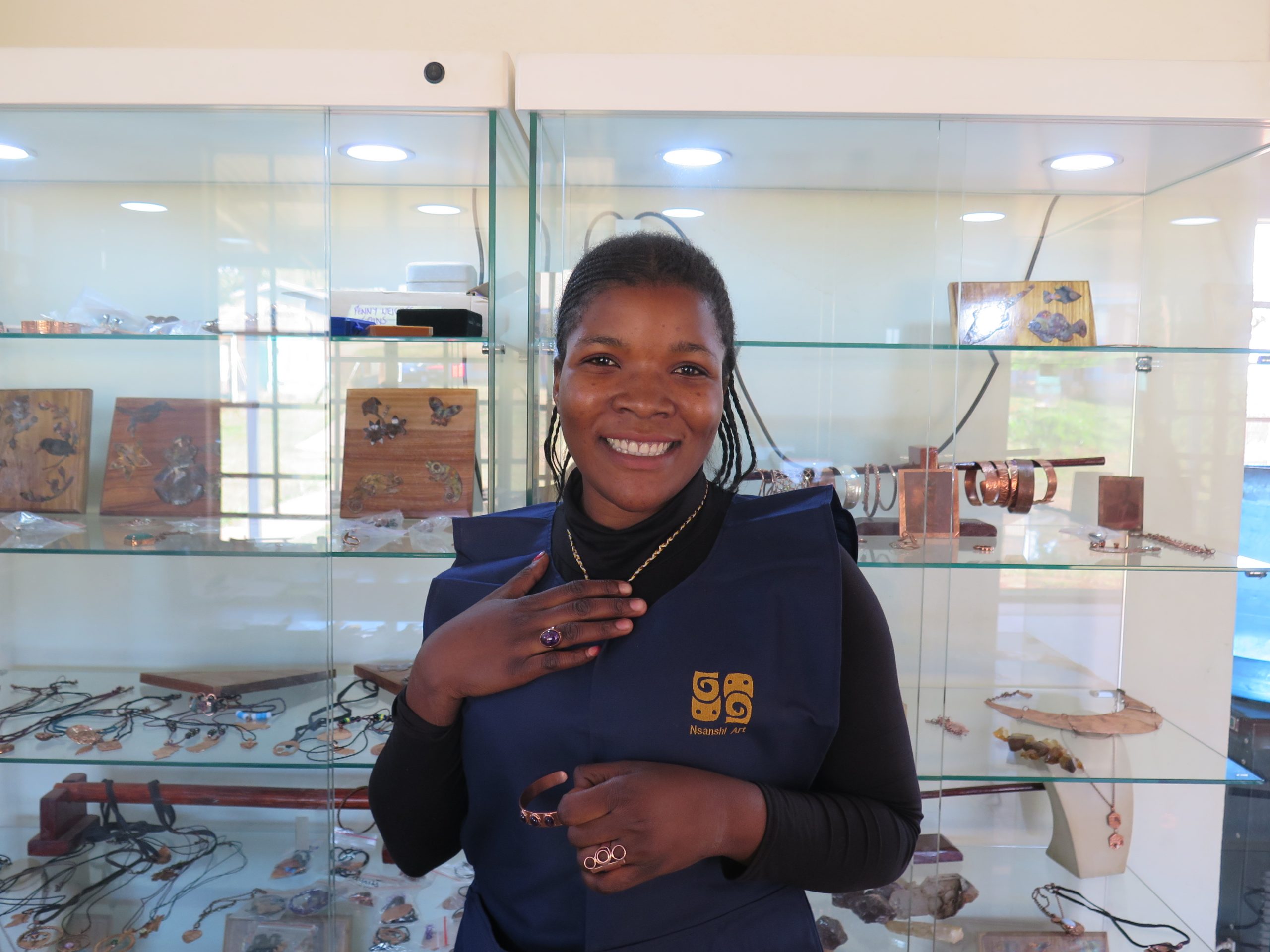
“Whenever I finish making an order, Michele encourages me to phone the customer and let them know that he or she can come and collect it,” says Lucy. “At first, I always thought: ‘How can I talk to this person?’ – especially if it’s a white person and I need to speak English,” she giggles. “But how can we run our own studio or workshop if we can’t talk to the customers?”
Starting her own business is, indeed, Lucy’s dream. She hopes to hone her skills and gain more experience at Nsanshi before taking the plunge and starting her own workshop. She also plans to teach her sister her new craft.
“My younger sister recently completed high school. I want to teach her the same skills that I learned. Then, when I have my own workshop, there will be two of us to work there.”
The gift of self-reliance
One of the primary reasons for setting up this program was to give young women the gift of self-reliance. In addition to a range of metalwork techniques and design skills, Nsanshi’s students are offered both financial and computer literacy classes, via the Kansanshi Foundation. “Our goal is not to just empower our students with jewellery design and manufacturing skills, but also to help them develop money management skills, encourage planning, saving and investments, and to educate them about debt and credit,” says Bruce Lewis, Kansanshi’s Corporate Social Responsibility Manager, who came up with the idea for a jewellery studio to add value to unfinished copper several years ago.
Setting up a studio with minimum tools – like Lucy hopes to do – is a feasible option, according to Michele. “We hope that, by acquiring a skill, these young women can become self-reliant in the future,” says Michele. “Working in someone else’s studio with more advanced tools is another option.”
That’s exactly what three of Nsanshi’s first graduates did: they found employment as full-time apprentices at a retailer that designs and manufactures jewellery, working in metals including gold.
It turns out that there are major benefits to starting out in copper. The red metal has a higher melting point than gold or silver, which means it’s harder, more brittle and, therefore, more challenging to manipulate. Nsanshi students’ training stands them in good stead to work widely in the world of jewellery-making.
How are they adding value to raw materials at Nsanshi Art?
Nsanshi Art makes all its products from offcuts and copper sweepings that come from Kansanshi mine’s smelter, which they put into furnaces and convert into copper bars. “We then work the bars into flat or round pieces, or wire – depending on what we’re making,” explains Michele. In other words, the form of copper that is required is determined by the design that she or the students create for a particular item.
Many of the items that they make are commissioned by customers. Some hear about Nsanshi Art through social media, but mostly it’s word of mouth. Sales are also made at various lodges in Kafue, Kitwe and Lusaka, and at the shop within Kansanshi and Trident Mines’ golf estates. “We also attend market days where we can raise awareness of Nsanshi Art and its links to combating Gender Based Violence,” says Michele.
The products that come out of Nsanshi Art range from basic bangles or rings – which students typically learn to make in the first couple of months of their apprenticeship – to intricate earrings and pendants that are set with stones like amethyst, tourmaline, or cubic zirconia. There are products for all ages and genders, including pure copper buckles that are sold on leather belts that are handmade at the studio – another notch that Nsanshi recently added to its proverbial belt.
A state-of-the art laser cutter has also been a very popular addition to the studio. The machine allows for very fine engraving – down to a few microns – and uses special software, which is another skill that the students are adding to their tool kit.
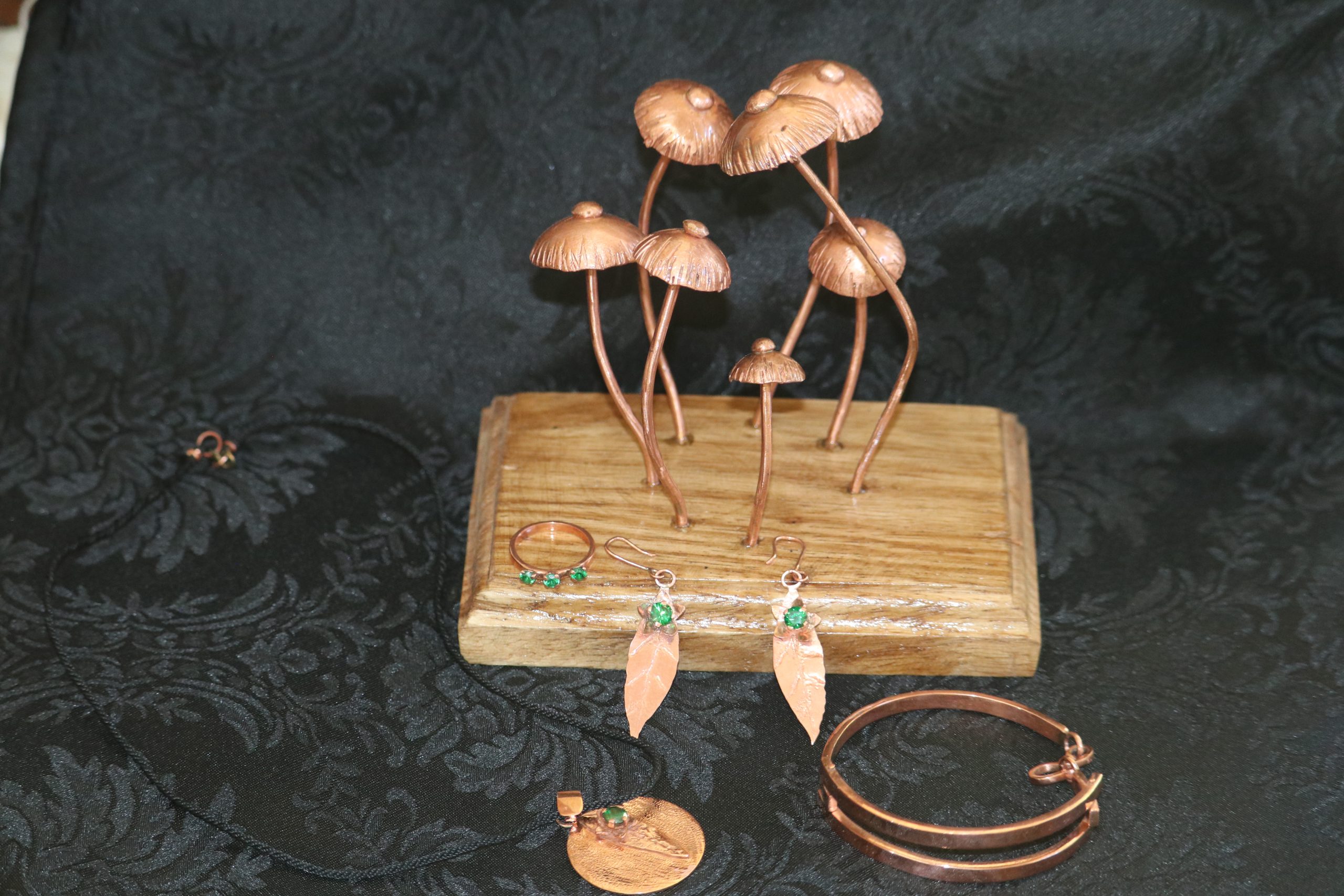
The students are exposed to a range of skills to see what they personally enjoy. But, there are also high standards that they’re expected to reach during their training. Currently, the students are in the throes of completing their first year assessment. They’re given a design brief and, after drawing the items – and adding explanations on how their design will be made – they have 15 working days to complete them. Among these is a three-piece jewellery set, a men’s bracelet with a hinge, and one non-jewellery piece.
Looking back on steep learning curves
Sharing what she learned during her own very steep learning curve is another skill that Lucy has gained at Nsanshi. In addition to working on jewellery commissions, she also helps to train the new students in the same techniques that she learned from scratch not long ago.
Did Lucy ever imagine that she’d be training people in a trade like jewellery design and manufacturing? “No, no, no!” she says, emphatically.
At first, she was very intimidated by some of the equipment that she and her classmates were exposed to, she explains. “When I started this program, I didn’t know anything, and I had the challenge of learning how to operate the machines. We have some machines here which are very dangerous – like melting pots, and ones that use gas. At first, I wanted to give up because I thought I couldn’t do this job. I thought it wasn’t for me.”
Luckily, her friends convinced Lucy that, as she got used to the work, she’d stop feeling afraid. Michele had the same sage advice.
“Michele advised us to keep on trying, and to keep on working with those dangerous machines so that we could get used to them. When our classmates started working with torches to do smelting, some of us were running away!” she laughs. “Now, I’m also able to teach the new ladies the things that Michele taught me.”
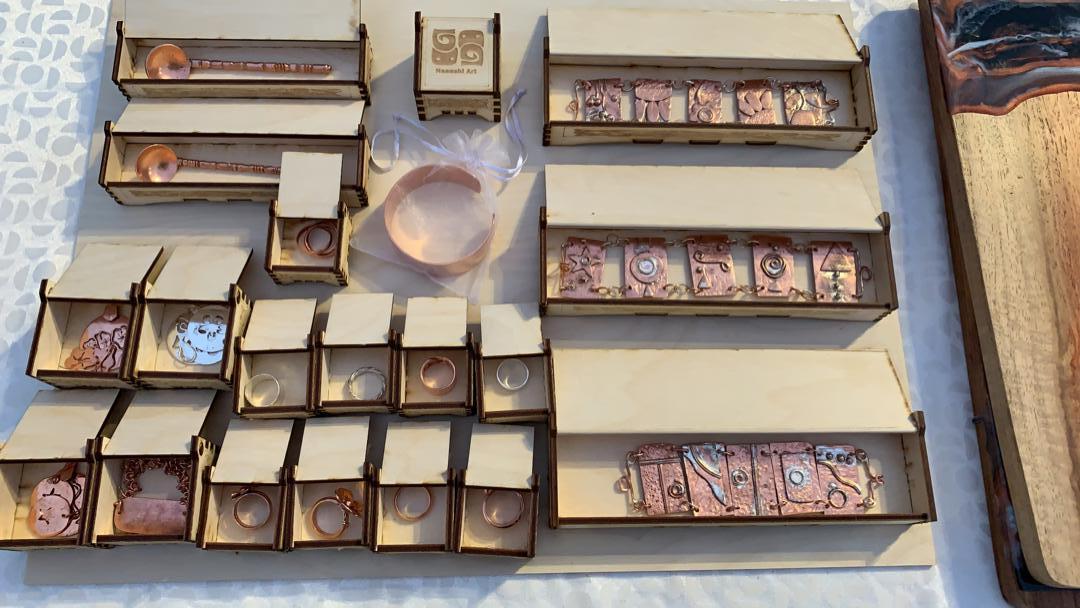
A story that the world wants to hear
Word is spreading about the work coming out of this modest workshop just down the path from Kansanshi Foundation’s vegetable garden. Nsanshi Art recently became a member of the Jewellery and Gemstone Association of Africa (JGAA) and, through the association, is now reaching international customers. “We featured in the Milano Fashion & Jewels Visionaries Exhibition,” Michele says proudly, “and we are currently working on a collection to be showcased at a closed exhibition in a gallery in London supported by Gemfields. The exposure will be great for our up and coming jewellers – and for Nsanshi.”
The fact that these young women’s work is travelling far beyond Zambia’s borders is testament both to the quality of their products, and to the importance of an initiative like this.
Nsanshi Art is not just about doing its part to help stop a cycle of gender-based violence that has become far too pervasive around the world. It’s also about perpetuating a positive new cycle: one in which, as new skills are learned and taken into the workforce, one newly-qualified group of women makes room for the next, each adding value along the way.
See also: Making Copper Count





















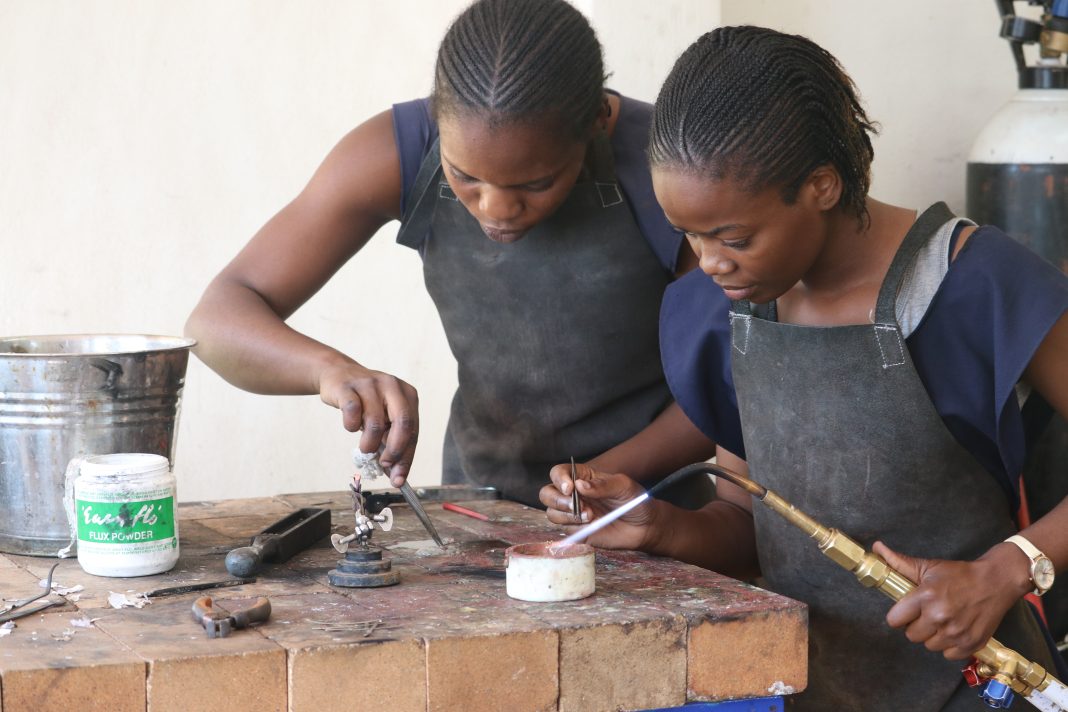
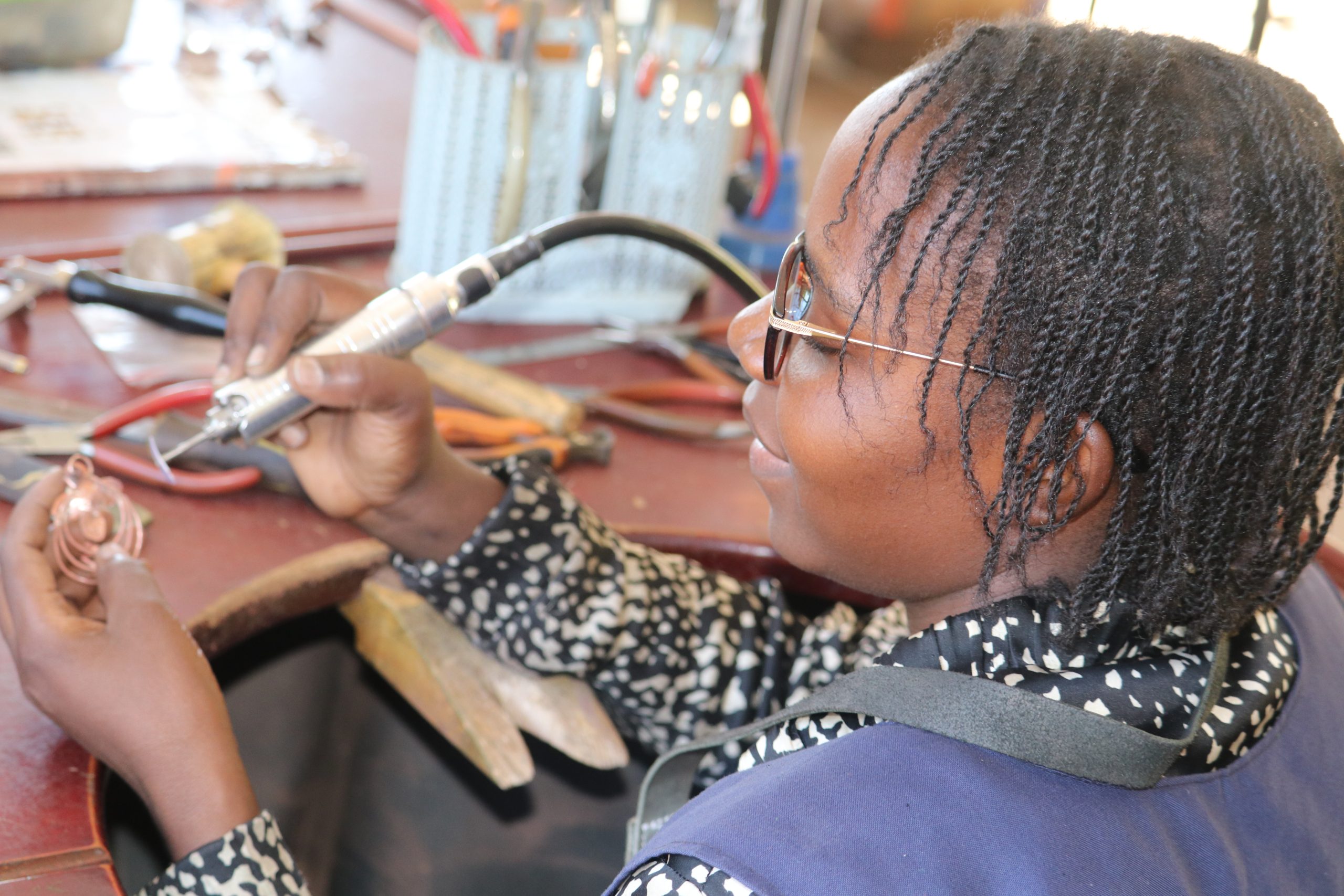
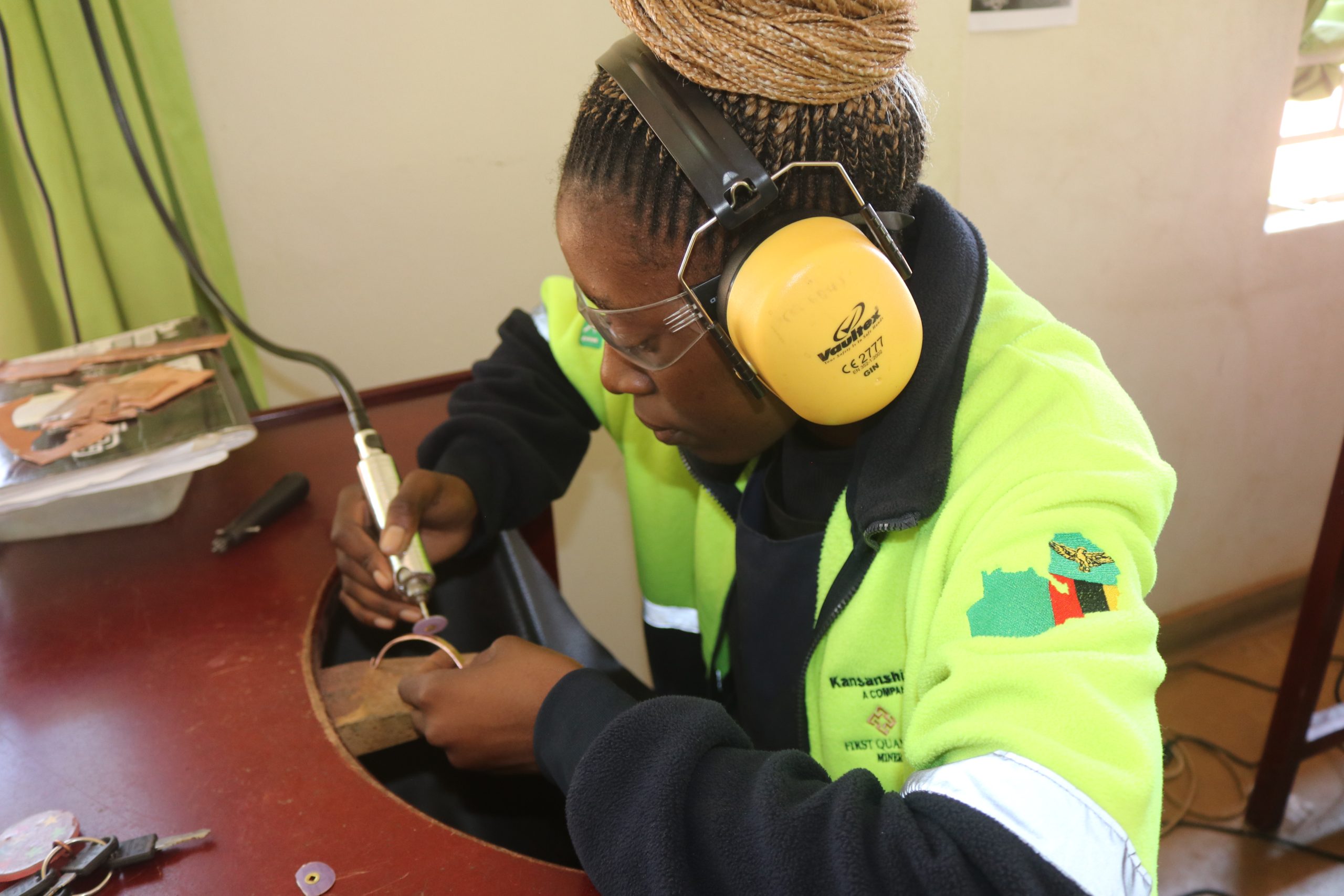

How can i be part of the training?
Thanks for your enquiry, Mildred. We’d suggest contacting the organisers of the program via Nsanshi Art’s Facebook page: https://www.facebook.com/NsanshiArt/. Alternatively, please feel free to email info [at] miningforzambia.com and we’ll connect you directly.